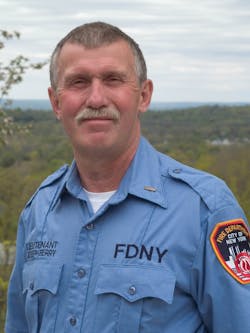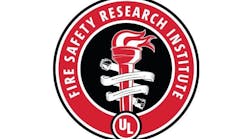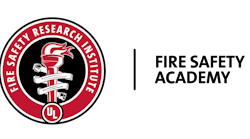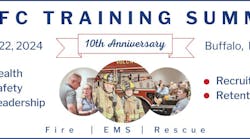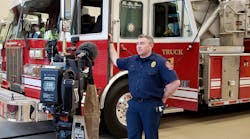Responding to structural fires, we sometimes hear the generic phrase “People reported trapped.” Firefighters’ adrenalin starts pumping, hearts beat faster and blood pressure increases. As the apparatus turns the corner, visible fire is venting out of three windows on the top floor of a three-story, non-fireproof multiple dwelling.
The ladder company chauffeur positions the apparatus for possible rescue. Firefighters exit the crew cab and assume their assigned positions to conduct search and rescue. The truck officer and the inside team enter the fire apartment and pass the fire room to search for the reported trapped occupants as the engine company stretches a 1¾-inch hoseline to the fire apartment.
“Ladder 99 to Battalion 55, heavy fire condition in the living room, primary search in the rest of the apartment negative.”
This is routine as it gets in the life of a firefighter. We dodge the bullet, no civilians are killed or injured and all firefighters return home to their families.
At another incident, a civilian approaches the first-due ladder company officer and says there’s a man trapped inside a small grocery store. “I was just talking to him,” she says. The lieutenant and the inside team force entry to the roll-down accordion gate as high heat and heavy smoke push out from the store. The officer crawls in on his hands and knees, passes the fire as it rolls off the ceiling to the left and begins conducting a primary search for the victim. To compound this rescue attempt, no engine company is on the scene yet. Approaching the rear of the store, the officer finds a second-floor mezzanine and ascends the makeshift staircase to search the area.
The engine company arrives and members communicate to the ladder company officer that they have water and are ready to extinguish the fire. The officer acknowledges and completes the primary search, which proves to be negative. The ladder company officer retreats to the street. Weak and exhausted, he removes his bunker coat and falls to the ground. He wakes up in the hospital and is diagnosed with heat stroke.
Putting us at risk
Why do people make up stories that place our lives at unnecessary risk? Is it sensationalism or one’s imagination?
One of the worst recent tragedies was the death of Firefighter Kyle Wilson of Prince William County, VA, Fire and Rescue. The perfect storm sequence of events occurred at this well-advanced outside fire in the rear of the structure communicating inside. It was 6 A.M., cars were parked in the driveway, no lights were on inside and the occupants’ status was unknown. Sustained 25-mph winds, gusting to 48 mph, traveled from the rear of the fire building toward the front, a lightweight, open-concept interior floor area and a combustible wood deck with a storage shed beneath. The exterior sheathing consisted of fiberboard covered with vinyl siding and the roof consisted of asphalt shingles covering an open-truss loft. Perforated vinyl soffits ventilated the truss loft area and a brick-veneer facade covered the front of the building.
A neighbor whose home directly faced the rear of the fire building discovered the fire. While his wife notified the fire department, he drove around the block to awaken the sleeping occupants. The occupants, in sleepwear, evacuated the house and took shelter from the cold in a neighbor’s house, assuming the good Samaritan would tell the fire department where they were.
The good Samaritan neighbor who helped with the evacuation returned to the front of the fire building and moved his vehicle from the middle of the street so it would not block the fire department’s access. By the time the good Samaritan made his way back to the scene to provide occupant information, firefighters were already engaged in interior operations – and in peril.
When the first-due unit arrived on the scene, the officer saw cars in the driveway and no lights on, so as any of us in the fire service would, assumed the occupants were still inside. Firefighters entered through the front door to conduct a fast primary search of the upstairs bedrooms coordinated with advancement of a charged hoseline.
Approximately three minutes into the search, the top floor became untenable with searing heat and zero visibility. The officer and firefighter immediately abort their search and evacuate. As the fire crew retreated through the hallway leading to the stairs, the officer became entangled in a small table. That caused the officer to tumble down the stairs and become separated from the firefighter.
As the fire extended into the interior on every level, the officer yelled to the firefighter to continue to move toward his voice. Fire crews operating in the foyer saw the officer engulfed in fire and remove him to the front yard. The officer yelled that the firefighter was still inside near the top of the staircase. A Mayday was transmitted on behalf of the missing firefighter, immediately followed by a Mayday call from the missing firefighter himself.
Fire crews reentered the structure, now heavily involved in fire, in an attempt to locate and rescue the missing firefighter, but the extreme fire conditions prevent their multiple rescue attempts. Fire conditions overwhelm the crews operating a 2½-inch and a 1¾-inch hoseline and all personnel are ordered to evacuate the structure as it collapses.
Firefighter Kyle Wilson lost his life that morning so others could live, but that was not the case this time. Had someone immediately met the first-due units on arrival to confirm all occupants were accounted for, incident priorities would have shifted and the outcome might have been different.
Today’s fuel loads
Today’s fires produce a very rich fuel load from the contents used in today’s home furnishings. Compounding this rich interior fuel load are the combustible structural materials and constructed esthetics found in and around today’s residential structures. These buildings are not only susceptible to fast-moving interior and exterior fires, but they have the potential for a building collapse in a very short period. The fire service no longer has time on its side to conduct a systematic search when smoke conditions are favorable for a flashover.
Entering the fire area and venting to search for life without the protection of a charged hoseline will become a tactic of the past; this rich fuel environment is starving for oxygen and the pent-up gases pressurizing in voided areas the venting of a window could result in a violent flashover.
A free-burning, vented fire is still producing an abundance of unburned fuel, so you may think it would be safe to vent in a location remote from the fire area to conduct a search, not realizing that heated rich fuel that is still contained within the structure can flash over once oxygen is induced.
Communication process
After any serious injury or loss of life in the fire service, we examine what went wrong and how can we prevent it from reoccurring. When a fire is reported to a 911 system, there is a very short period to obtain vital information and transfer it to responding units. The communication process starts the transferring of information from one person to others. Sometimes, this information is misinterpreted as it is transferred from person to person.
The excitement from the incident itself can create an innocent, but inaccurate perception of information which will be transmitted to the first responding units. Take the statement “People reported trapped.” Was this perceived by one’s suspicion or visual contact with the person or persons trapped or the visual items found outside the perimeter of the home? Did the person reporting the fire say, “I think the people are still inside”? The 911 dispatcher must rely on the information obtained from the caller, so this report would be interpreted as “occupant status unconfirmed.” On the other hand, if the caller is in visual contact with the person or persons who are trapped inside, then the occupant status is “confirmed, people trapped.” It is vital that the person reporting such information await the arrival of the fire department and verbally relay it to the first-arriving units.
The public’s safety
The fire service spends enormous time and resources to educate the public on fire safety, emphasizing the importance of smoke and carbon monoxide (CO) detectors, viable escape plans, general housekeeping and other fire prevention information. But does the fire service do enough to teach the public how to report a fire with the necessary vital information that could save a firefighter from risking his or her life unnecessarily?
People being evacuated from a fire building have the responsibility to report the fire and await the arrival of the first-due fire units to verbally convey that all occupants have been evacuated or someone is not accounted for. In that case, the age and last location of that missing person would be vital information for firefighters to conduct search and rescue.
The fire service is constantly revising operational strategies through training to keep the public safe. Situations and fire conditions will change drastically from the time the first call is made to the 911 dispatcher. It is vital to continue observing and communicating any additional information until the first-arriving units are on the scene.
“Human history becomes more and more a race between education and catastrophe.” — H.G. Wells.
